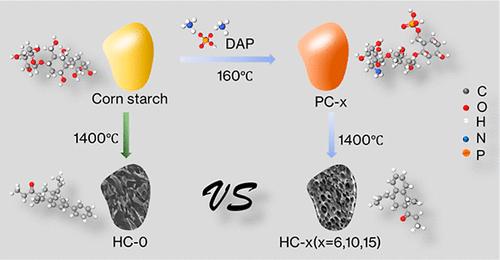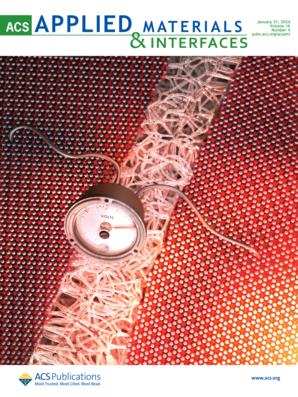Achieving Enhanced Sodium Storage Performance of Hard Carbon via Rational Modification of a Starch Precursor
IF 8.3
2区 材料科学
Q1 MATERIALS SCIENCE, MULTIDISCIPLINARY
引用次数: 0
Abstract
Chemical modification of starch hydroxyl groups plays a key role in modulating the microstructures and enhancing the electrochemical performance of the hard carbon (HC) anode in sodium-ion batteries (SIBs). However, the regulation and design of advanced sodium storage structures are limited by their diverse and complex microstructures. Herein, diammonium phosphate (DAP) as a cross-linking agent for corn starch and modification of the physicochemical properties of the starch surface can effectively promote the regulation and balance between the pore structure and interlayer spacing of the constructed HC. The electrochemical performance of modified HC generally outperformed that of unmodified HC samples. Specifically, the optimized HC-10 achieved an improved reversible capacity (344.16 mAh g–1 at 0.03 A g–1), optimal rate capability (134.73 mAh g–1 at 0.3 A g–1), and enduring cycle life (capacity retention of 98.5% after 500 cycles at 0.3 A g–1). The superior performance of HC-10 originated from the optimal modification operation of DAP for corn starch, resulting in a balance between the formation of disordered phases and pore structures. On the one hand, the DAP facilitates the growth of the carbon layers during pyrolysis and affects the microinterlayer structure of HC, while it also accelerates the decomposition of the precursor as a catalyst and releases gas phase products, which further modulate the defects and pore structures of HC. This work provides a reference for the microstructural regulation of HC, paving the way for the development of biomass-derived anode materials with exceptional charge/discharge performance.

求助全文
约1分钟内获得全文
求助全文
来源期刊

ACS Applied Materials & Interfaces
工程技术-材料科学:综合
CiteScore
16.00
自引率
6.30%
发文量
4978
审稿时长
1.8 months
期刊介绍:
ACS Applied Materials & Interfaces is a leading interdisciplinary journal that brings together chemists, engineers, physicists, and biologists to explore the development and utilization of newly-discovered materials and interfacial processes for specific applications. Our journal has experienced remarkable growth since its establishment in 2009, both in terms of the number of articles published and the impact of the research showcased. We are proud to foster a truly global community, with the majority of published articles originating from outside the United States, reflecting the rapid growth of applied research worldwide.
 求助内容:
求助内容: 应助结果提醒方式:
应助结果提醒方式:


